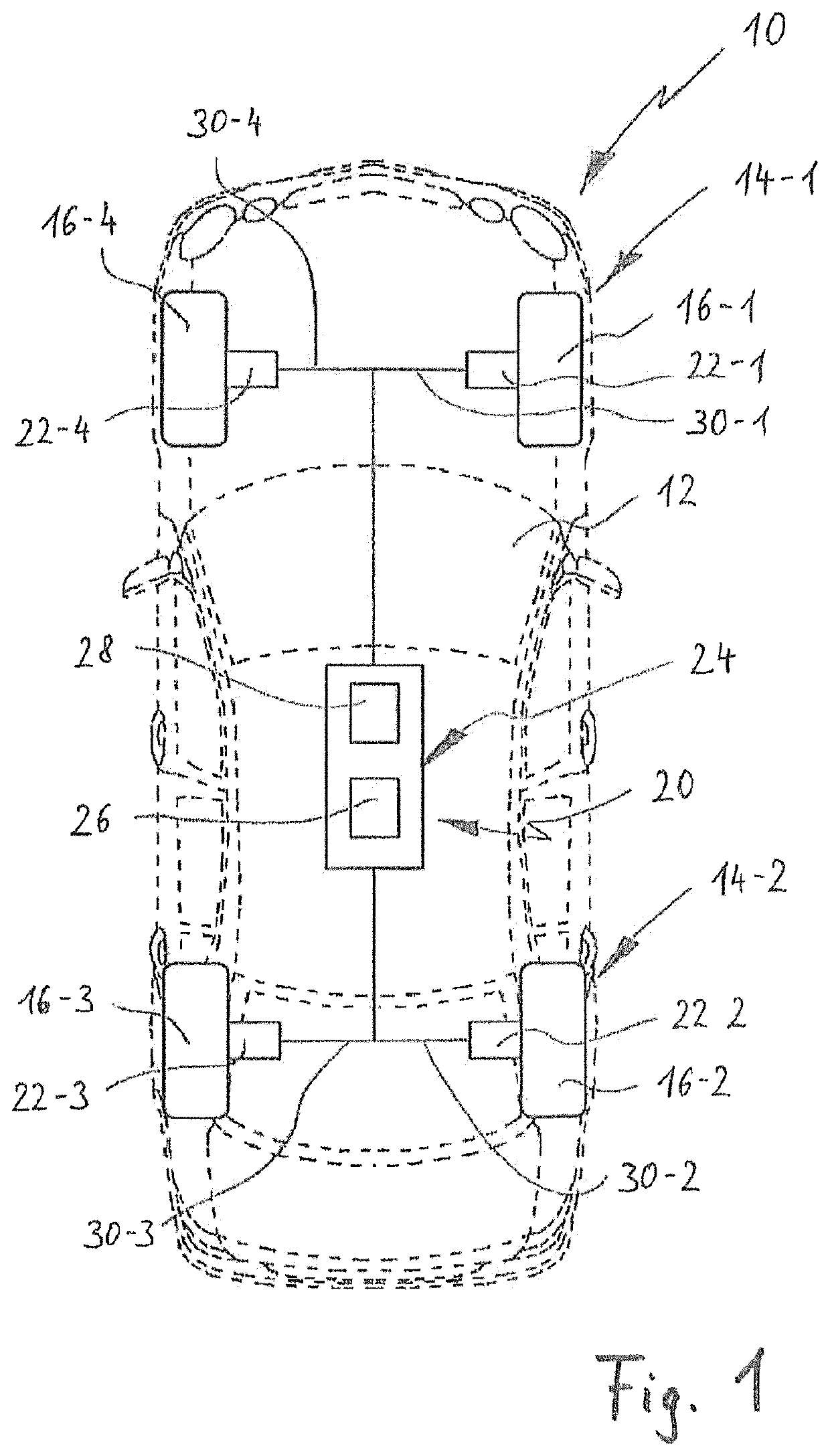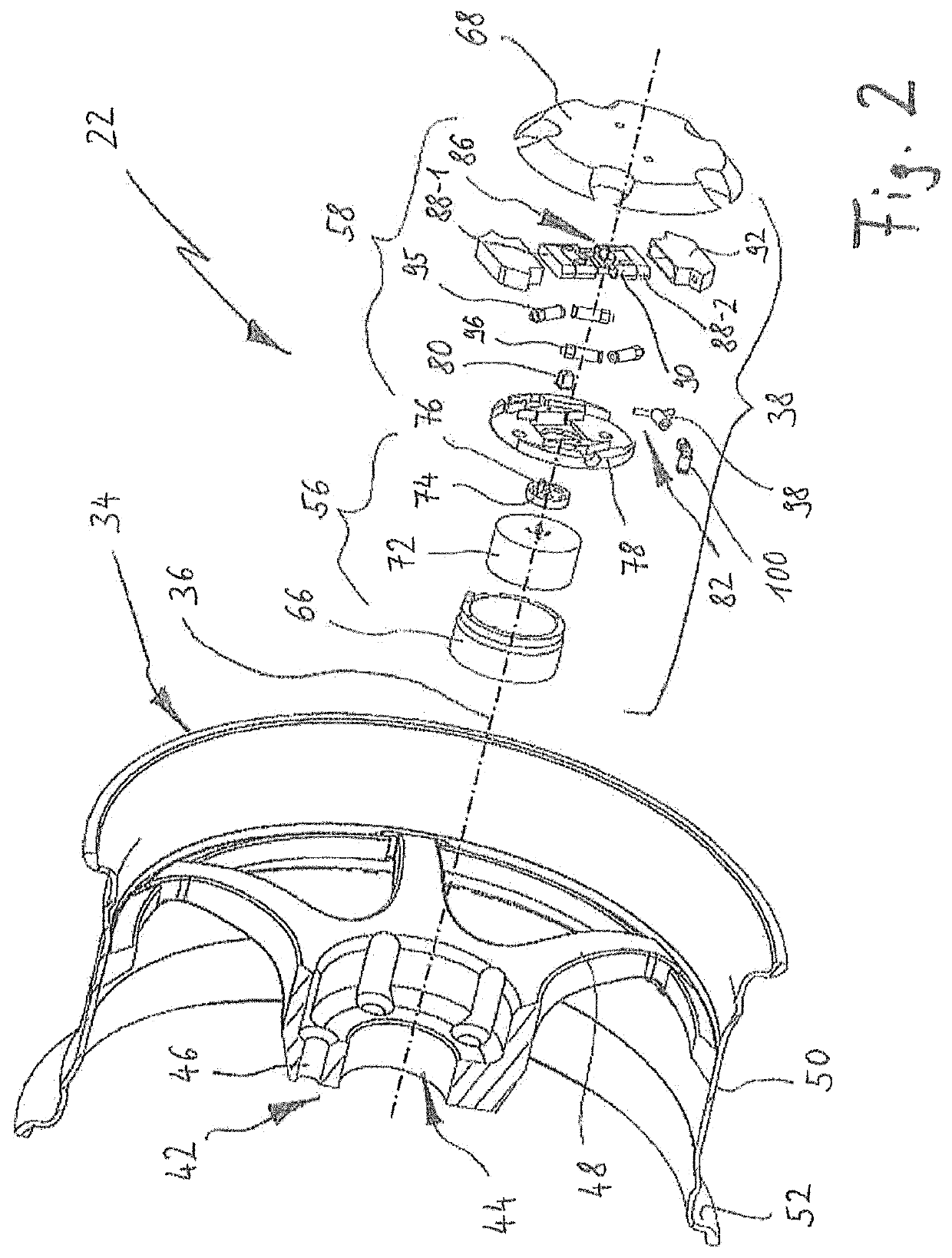Tire pressure control system and components
a technology of control system and components, applied in the direction of positive displacement liquid engine, piston pump, liquid fuel engine, etc., can solve the problems of increasing maintenance cost, corresponding construction expense, and long line distances of pressurized medium lines, so as to increase the driving safety and driving comfort of the vehicle, and the data rate is higher. , the effect of increasing the data quality
- Summary
- Abstract
- Description
- Claims
- Application Information
AI Technical Summary
Benefits of technology
Problems solved by technology
Method used
Image
Examples
example 1
[0159]A decentralized integrated pressurized medium supply device, in particular for supplying compressed air for a vehicle wheel,[0160]having a rotatably supported vehicle wheel that includes a tire that can be inflated with a pressurized fluid,[0161]having a compressor unit, in particular an electric motor-driven compressor unit, which can be mounted on the vehicle wheel and, together with the vehicle wheel, can be mounted in rotary fashion on a wheel carrier of a vehicle,
[0162]in which the compressor unit includes a compressor and in an assembled state, is positioned in a central region of the vehicle wheel, between a rim of the vehicle wheel and a wheel hub, and
[0163]the compressor can be supplied with energy via the wheel carrier of the vehicle in order, in an active operating state, to exert pressure on a pressurized fluid, in particular air, and supply it to the tire.
[0164]For each vehicle wheel, a pressurized medium supply device can be provided, which is structurally integr...
example 2
[0168]A pressurized medium supply device according to Example 1, in which the compressor unit includes a drive unit and a compressor section having at least one working chamber; the drive unit and the compressor section are axially offset from each other; the compressor section is oriented toward an outer side and the drive unit is oriented toward an inner side; and in the mounted state, the compressor unit is accommodated in at least some sections along its axial dimension in a cylindrical recess, which is embodied in the rim.
[0169]At least part of the compressor unit can extend through a center hole in the rim.
example 3
[0170]A pressurized medium supply device according to Example 1 or 2, in which the compressor unit is embodied as modular and includes a module holder and can be inserted from an outer side into the rim; at least part of the compressor unit extends through the central region.
PUM
| Property | Measurement | Unit |
|---|---|---|
| diameters | aaaaa | aaaaa |
| temperatures | aaaaa | aaaaa |
| pressure | aaaaa | aaaaa |
Abstract
Description
Claims
Application Information
 Login to View More
Login to View More - R&D
- Intellectual Property
- Life Sciences
- Materials
- Tech Scout
- Unparalleled Data Quality
- Higher Quality Content
- 60% Fewer Hallucinations
Browse by: Latest US Patents, China's latest patents, Technical Efficacy Thesaurus, Application Domain, Technology Topic, Popular Technical Reports.
© 2025 PatSnap. All rights reserved.Legal|Privacy policy|Modern Slavery Act Transparency Statement|Sitemap|About US| Contact US: help@patsnap.com



